Map of Ho Chi Minh City: Your Essential Travel Guide to Vietnam’s Bustling Metropolis
Map of Ho Chi Minh City is more than a set of streets—it’s your gateway to Vietnam’s most dynamic urban adventure. From French colonial landmarks to buzzing night markets and world-class street food, this southern metropolis is a city of contrasts and constant motion. In this guide, we’ll help you navigate it all with an easy-to-follow map, top attractions, must-try dishes, and insider travel tips to make the most of your visit.
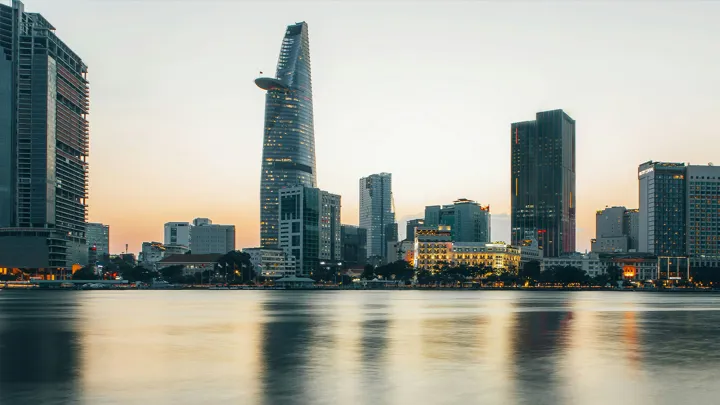
Geography & Administrative Divisions
Ho Chi Minh City (HCMC), formerly known as Saigon, lies in the heart of southern Vietnam and serves as the country’s economic and transportation powerhouse. Strategically located along the Saigon River, the city is approximately 1,760 km south of Hanoi and just a short flight away from major Southeast Asian cities like Bangkok, Singapore, and Kuala Lumpur.
Spanning more than 2,000 square kilometers, HCMC is not just one single urban core—it’s a sprawling metropolis composed of a rich mix of historic neighborhoods, high-rise districts, and green suburban areas. Administratively, the city is divided into 22 districts, including:
16 urban districts (Quận), such as District 1, 3, 5, and the fast-growing District 7 and District 2 (now part of Thu Duc City),
1 municipal city – Thu Duc City, officially established in 2021, merging Districts 2, 9, and Thu Duc District to become a “city within a city”,
5 rural districts (Huyện), such as Cu Chi, Hoc Mon, and Can Gio—offering a mix of countryside charm, wetlands, and eco-tourism potential.
Each district has its own character: District 1 is the colonial-era core filled with museums and landmarks; District 5 boasts the rich heritage of Chinatown; while suburban areas like District 12 or Binh Chanh blend local life with emerging urban development.
Getting around Ho Chi Minh City is a journey through contrasts—historic quarters, bustling markets, and emerging urban zones all lie side by side. A clear map doesn’t just help you find your way—it reveals how each district tells a different story.
Historical & Cultural Background
Before it became Vietnam’s economic powerhouse, Ho Chi Minh City had centuries of layered history. Originally part of the Khmer Empire, the area was later settled by Vietnamese migrants in the 17th century and named Gia Định. In the mid-19th century, French colonists transformed it into Saigon—a strategic colonial outpost known for its tree-lined boulevards and elegant architecture, earning it the nickname “Pearl of the Far East.”
Following the Vietnam War and the country’s reunification in 1975, Saigon was renamed Ho Chi Minh City in honor of the revolutionary leader. Yet, even today, locals still affectionately use both names—each reflecting a different era in the city’s identity.
This city’s cultural fabric is a vivid tapestry woven from Vietnamese, French, Chinese, and Southern rural influences. You’ll find Taoist temples beside French cathedrals, street vendors selling both bánh mì and dim sum, and festivals rooted in both Eastern spirituality and Western tradition.
Modern Ho Chi Minh City embraces its past while charging headfirst into the future—a place where nostalgic charm meets entrepreneurial energy, and where history is not just remembered, but still lived in every street.

Weather & Best Time to Visit
Ho Chi Minh City has a tropical monsoon climate, meaning it experiences two distinct seasons rather than four: the dry season from December to April, and the rainy season from May to November. Temperatures remain fairly consistent year-round, typically ranging between 25°C to 35°C (77°F to 95°F), with high humidity.
The best time to visit is between December and March, when the weather is at its most pleasant—sunny skies, lower humidity, and cooler evenings make for ideal sightseeing conditions. This period also coincides with Tet (Lunar New Year), offering a chance to witness Vietnam’s biggest cultural celebration.
If you’re traveling during the rainy months, don’t worry—most showers are short and refreshing, usually falling in the late afternoon. Just be sure to pack light, breathable clothing, sunscreen, and a compact raincoat or umbrella to stay comfortable on the go.
Key Neighborhoods to Explore
Navigating Ho Chi Minh City becomes far more rewarding when you understand its distinct districts—each with its own rhythm, personality, and purpose. Here’s a breakdown of some of the most visitor-friendly areas to help you plan your journey more effectively:
District 1: The city’s beating heart. Home to historic landmarks like the Saigon Notre-Dame Cathedral and the Central Post Office, District 1 is also where you’ll find bustling markets, luxury shopping malls, rooftop bars, and a vibrant nightlife scene. It’s the perfect base for first-time visitors.
District 3: Just next door, District 3 offers a calmer, more residential vibe while still being rich in culture. Wander through leafy streets lined with French-era villas, explore lesser-known museums, or enjoy quiet cafés tucked away from the tourist crowds.
District 5 (Chinatown): A cultural treasure trove, this area—also known as Chợ Lớn—is the spiritual and culinary heart of the Chinese-Vietnamese community. Expect ornate temples, traditional apothecaries, and authentic street food stalls serving dim sum, hủ tiếu, and herbal teas.
Districts 2 & 7: Representing Ho Chi Minh City’s modern face, these districts are known for their sleek architecture, international schools, riverside promenades, and a wide selection of global dining options. District 2 (now part of Thu Duc City) is popular among expats, while District 7’s Phu My Hung area is a model of urban planning and tranquility.
Must-Visit Attractions in Ho Chi Minh City
Saigon Central Post Office
Designed by Gustave Eiffel, the Saigon Central Post Office is an architectural gem that blends Gothic, Renaissance, and French colonial styles. With its vaulted ceiling, vintage telephone booths, and beautiful tiled floors, the building remains a functioning post office and a favorite backdrop for travel photos and architecture lovers alike.

Notre-Dame Cathedral Basilica of Saigon
Built entirely with materials imported from France, this red-brick cathedral is one of the most iconic remnants of colonial Saigon. Located in the heart of District 1, the church offers a peaceful contrast to the city’s chaos and is especially striking when viewed alongside the adjacent Central Post Office.
Ben Thanh Market
A symbol of Ho Chi Minh City, Ben Thanh Market is a bustling maze of stalls selling souvenirs, spices, clothes, and local food. From fresh spring rolls to Vietnamese coffee beans, it’s the perfect place to taste, shop, and soak in the energy of daily Saigon life. Come ready to bargain!
Ho Chi Minh Museum (Dragon Wharf)
Once the port where President Ho Chi Minh departed Vietnam in 1911, this riverside building now serves as a museum dedicated to his life and legacy. The French colonial architecture and historical exhibits make it a meaningful stop for visitors interested in Vietnam’s modern history and national identity.
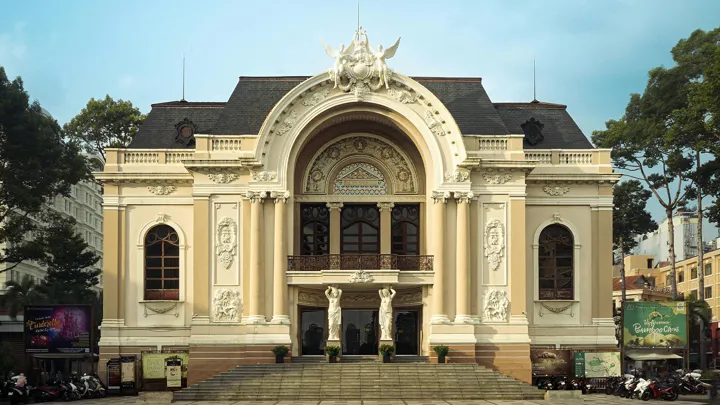
Independence Palace (Reunification Palace)
Once the home of South Vietnam’s president, this landmark marks the historic end of the Vietnam War when tanks crashed through its gates in 1975. Visitors can explore its preserved 1970s architecture, underground bunkers, and grand reception rooms frozen in time.
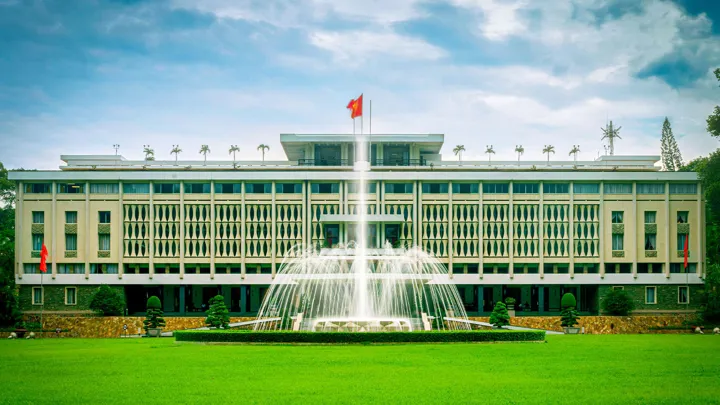
War Remnants Museum
A powerful and often emotional museum that offers a raw look at the Vietnam War from the Vietnamese perspective. Exhibits include wartime photography, military equipment, and firsthand accounts—providing context and reflection for travelers seeking deeper understanding.
Cu Chi Tunnels
Located on the city’s outskirts, the Cu Chi Tunnels offer a fascinating glimpse into Vietnam’s wartime resilience. This vast underground network was used by the Viet Cong for shelter, communication, and surprise attacks. Visitors can crawl through parts of the tunnel, explore booby traps, and gain powerful insights into guerrilla warfare and survival.

Saigon Opera House (Municipal Theatre)
A stunning example of French colonial architecture, the Saigon Opera House is a cultural centerpiece in District 1. Still in use today, it hosts traditional and contemporary performances, including A O Show and opera concerts. Even if you don’t attend a show, its grand façade is worth admiring.
Suoi Tien Theme Park
Located in District 9, Suoi Tien is Vietnam’s most fantastical theme park—blending Buddhist mythology, Vietnamese legends, and amusement rides. With giant sculptures, water parks, temples, and quirky attractions, it’s a unique experience for families or anyone looking for playful, cultural fun on the city’s outskirts.
Saigon Zoo and Botanical Gardens (Thao Cam Vien)
Opened in 1865, this is one of the oldest zoos in the world. Located near downtown, it houses hundreds of animal species, tropical plants, and shaded walking paths. While the zoo may feel dated, it offers a relaxing green space perfect for families and those seeking a slower pace in the city.
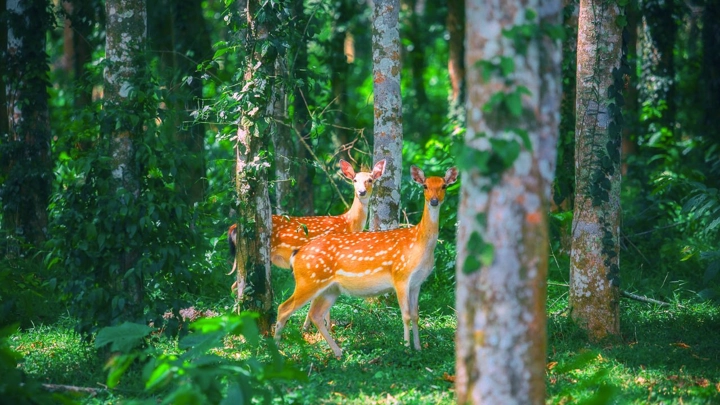
Dam Sen Water Park
A top summer destination for locals and tourists alike, Dam Sen Water Park features thrilling slides, wave pools, lazy rivers, and kid-friendly zones. Conveniently located in District 11, it’s a refreshing escape from Saigon’s heat and ideal for families or groups looking for a fun day out.
Bui Vien Walking Street
Often referred to as Saigon’s backpacker street, Bui Vien comes alive after dark with bars, live music, street performers, and vibrant nightlife. Though it can be chaotic, it’s a must-visit for those looking to experience the city’s youthful, free-spirited energy. Expect noise, neon lights, and nonstop action.
Nguyen Hue Walking Street
Located in the city center, Nguyen Hue is a wide pedestrian boulevard lined with cafés, shopping centers, and modern architecture. On weekends, it becomes a gathering place for local youth, street shows, and cultural events. Great for a sunset stroll and people-watching with a backdrop of Saigon’s skyline.

Starlight Bridge (Cầu Ánh Sao)
Nestled in the Phu My Hung area, Starlight Bridge is a romantic, LED-lit footbridge crossing a peaceful lake. At night, its illuminated arc resembles a glowing rainbow over water, making it a favorite spot for couples and photographers. A quiet and scenic contrast to the city’s busy core.
Saigon River
Winding through the heart of the city, the Saigon River offers a different perspective of Ho Chi Minh City. You can take a relaxing dinner cruise, ride a water bus, or enjoy riverside cafés. The river plays a vital role in the city’s identity, both historically and in modern transport.
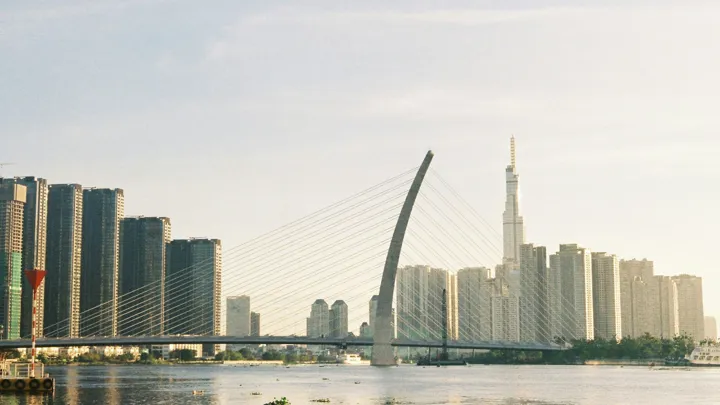
Southern Women’s Museum
This unique museum honors the contributions of Vietnamese women, especially in wartime, education, and cultural life. Exhibits include traditional costumes, historical artifacts, and stories of female revolutionaries. It’s a quiet but powerful destination that sheds light on the role of women in Vietnam’s development.
Ho Chi Minh City Cuisine – A Foodie’s Paradise
From early morning street stalls to late-night vendors, Ho Chi Minh City offers a nonstop feast of flavors, textures, and aromas. Whether you’re a seasoned foodie or simply curious, these iconic local dishes will give you a true taste of Saigon’s vibrant culinary soul.
Cơm tấm Sài Gòn (Broken Rice with Grilled Pork)
A signature dish of Saigon, cơm tấm uses broken rice grains and is topped with grilled pork chops, shredded pork skin, steamed egg meatloaf, and a fried egg. It’s typically served with pickled vegetables and a flavorful fish sauce. Simple yet deeply satisfying, it’s a go-to breakfast or lunch for many locals.
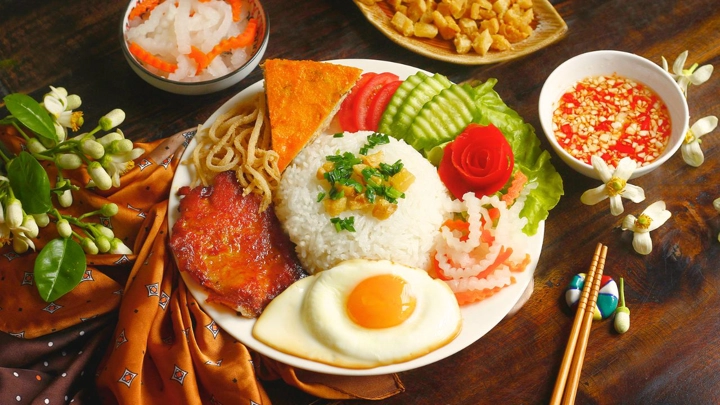
Phá lấu bò (Beef Offal Stew)
Phá lấu is a bold, richly spiced stew made from beef offal simmered in coconut milk and five-spice seasoning. Served with bread or noodles, it has a unique texture and deep, savory flavor. Though not for the faint of heart, it’s a cherished comfort food for many Saigon locals.
Hủ tiếu Nam Vang (Phnom Penh-style Noodle Soup)
Originally from Cambodia and adapted by Saigonese taste, hủ tiếu Nam Vang features a savory pork-based broth with clear noodles, shrimp, minced pork, quail eggs, and fresh herbs. Diners can choose to enjoy it as a soup or “dry” with broth on the side. It’s light, flavorful, and incredibly versatile.
Gỏi cuốn (Fresh Spring Rolls)
These fresh, rice paper-wrapped rolls are filled with shrimp, pork, vermicelli, and herbs, then served with peanut-hoisin dipping sauce. Gỏi cuốn are light yet satisfying—perfect as a starter, snack, or healthy meal. They’re a reflection of Vietnam’s balance between flavor, texture, and freshness.
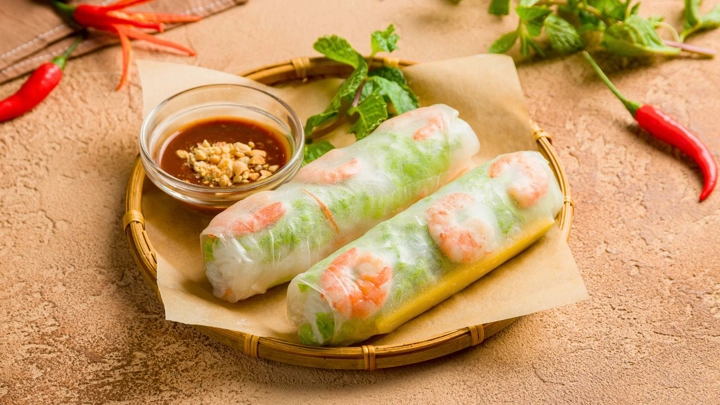
Gỏi khô bò (Green Papaya Salad with Dried Beef)
A popular street snack among Saigon’s youth, gỏi khô bò combines shredded green papaya with dried beef, crushed peanuts, basil, and a tangy soy-based dressing. It’s crunchy, sweet, salty, and spicy all at once—served in plastic containers and often enjoyed right on the sidewalk or at local parks.
Bánh tráng trộn (Mixed Rice Paper Salad)
A beloved teen street food, bánh tráng trộn is a salad made with shredded rice paper, dried beef, herbs, quail eggs, and a mix of tamarind sauce and chili oil. Tangy, spicy, and chewy, it’s an explosion of flavor in every bite—and a must-try for adventurous eaters.
Bột chiên (Pan-Fried Rice Cakes with Egg)
This savory snack is made of rice flour cubes pan-fried until crispy, then stir-fried with eggs and topped with green onions and pickled papaya. A drizzle of sweet soy sauce ties it all together. Often sold from night market stalls, bột chiên is a nostalgic treat for many Saigonese.
Trà sữa Sài Gòn (Saigon-style Milk Tea)
Saigon’s milk tea scene is both trendy and locally rooted. While international chains are popular, countless Vietnamese-style stalls serve up creamy black or green tea with chewy tapioca pearls, flan, or grass jelly. It’s not just a drink—it’s a part of daily life and youth culture.
Local Culture, People & Urban Energy
People & Communities
Ho Chi Minh City is a melting pot of cultures, shaped by waves of migration and centuries of trade. The majority of locals are ethnic Kinh (Vietnamese), but the city is also home to large Chinese-Vietnamese communities in District 5 (Chợ Lớn), Khmer minorities, and families with French or Indian heritage from colonial times.
These communities have left visible imprints on the city’s cuisine, architecture, temples, and everyday life—giving Saigon its richly layered identity.
Lifestyle & City Pulse
Life in Saigon is vibrant, noisy, and alive. Motorbikes dominate the streets, street vendors set up shop on every corner, and cafés are social hubs from dawn till midnight.
Despite the modern pace, family values remain strong. From morning offerings at ancestral altars to three-generation households sharing meals, the rhythm of tradition continues beneath the urban buzz.
Art, Culture & Everyday Expression
From shadowed stages to sunlit book streets, Ho Chi Minh City offers a layered cultural landscape where both tradition and innovation thrive side by side. Below are the standout expressions of local creativity and identity:
Cải Lương (Southern Folk Opera)
A unique theatrical form rooted in the Mekong Delta, cải lương combines spoken drama, operatic singing, and traditional Vietnamese music. Performed in theaters like Nhà hát Cải Lương Trần Hữu Trang, it tells emotional tales of loyalty, love, and morality. Though old-fashioned to some, cải lương remains a cherished genre for older generations and cultural enthusiasts.
Water Puppetry (Múa rối nước)
This ancient art form originated in Vietnam’s rice paddies and continues to entertain audiences at venues like the Golden Dragon Water Puppet Theater. Puppets glide over a water stage, bringing to life rural folklore, harvest scenes, and mythical creatures—accompanied by live traditional music. It’s a family-friendly cultural experience not to miss.

Independent Art Galleries & Creative Spaces
The city’s contemporary art scene is blooming. Places like The Factory Contemporary Arts Centre and Salon Saigon host exhibitions, performances, and artist talks. From edgy installations to experimental sculpture, these galleries reflect Saigon’s growing creative spirit—led by a new generation of artists with bold ideas and global voices.
Indie Cinemas & Film Collectives
Beyond mainstream cinemas, film lovers can explore spaces like DCINE or Cinebox where independent and international films are screened. Film festivals and community-led screenings also promote Vietnamese indie cinema and documentaries. It’s a great way to see Saigon through the lens of local storytellers.
Nguyễn Văn Bình Book Street
Nestled beside the Central Post Office and Notre-Dame Cathedral, this tree-lined pedestrian street is lined with charming bookshops, open-air cafés, and cultural booths. Events like book signings, poetry readings, and art markets regularly take place here. It’s a haven for quiet minds in the heart of a buzzing city.

Festivals & Celebrations
Though modern and fast-paced, Ho Chi Minh City still preserves age-old traditions through vibrant local festivals. Many of these events are tied to the city’s diverse communities and neighborhoods, offering travelers a rare glimpse into its cultural soul:
Lantern Festival in Cholon (Tết Nguyên Tiêu)
Held on the 15th day of the Lunar New Year, this festival lights up Cholon (District 5) with vibrant red lanterns, incense-filled temples, and traditional lion dances. Organized by the Chinese-Vietnamese community, it blends spiritual rituals with spectacular street processions, drawing huge crowds and transforming Saigon’s Chinatown into a glowing sea of culture.
Jade Emperor Pagoda Festival (Chùa Ngọc Hoàng)
Each year on the 9th day of the first lunar month, thousands flock to the Jade Emperor Pagoda to pray for good fortune. Locals believe wishes made on this day are especially blessed. The pagoda, with its incense-swirled altars and carved wooden statues, becomes a powerful spiritual space buzzing with prayers and offerings.
Death Anniversary of the Jewelry Craft Ancestors (Giỗ Tổ Nghề Kim Hoàn)
Held annually by the city’s goldsmith and jeweler guilds, this event pays tribute to the profession’s founders. Ceremonies are often held at temples like Tổ Đình Kim Hoàn, accompanied by traditional music and community offerings. It reflects the pride and continuity of Saigon’s artisan heritage.
Whale Worship Festival (Lễ hội Nghinh Ông)
Celebrated by coastal fishing communities in Can Gio District, this festival honors the Whale God (Ông) as a guardian of fishermen. Festivities include dragon boat races, offerings, and processions. It’s a unique chance to witness how ancient beliefs still thrive in Saigon’s rural outskirts.
Lễ Kỳ Yên at Bình Đông Communal House
This is a traditional village festival in District 8, organized to pray for peace, good harvests, and community blessings. Activities include lễ tế thần (sacrificial rituals), hát bội (classical theatre), and folk games. Though tucked away in a quieter neighborhood, it offers an authentic look at southern Vietnamese folk traditions.
How To Get To Ho Chi Minh City From Other Destinations
No matter where you start in Vietnam, reaching Ho Chi Minh City is easy thanks to a well-connected transport system:
From Hanoi
Flight: The fastest and most convenient option. Daily direct flights take about 2 hours.
Train: The Reunification Express takes 30–35 hours, ideal for scenic travel lovers.
Bus: Not recommended due to duration (~35+ hours).
From Hue
Flight: Daily flights (about 1.5 hours) available.
Train: The journey takes around 18–20 hours and offers coastal views.
Bus: Overnight sleeper buses take about 22 hours.
From Hoi An
Flight: Take a short drive to Da Nang International Airport (~45 mins), then a 1.5-hour flight to Ho Chi Minh City.
Train: Board from Da Nang station. The ride takes 17–19 hours.
Bus: Sleeper buses run directly from Hoi An, taking around 24 hours.
For a more detailed guide, check out our full article on how to travel from Hanoi, Hue, and Hoi An to Ho Chi Minh City
Once you get here, Ho Chi Minh City’s transport options are varied and traveler-friendly:
Grab app is the most convenient way to book motorbike taxis or cars.
Buses are budget-friendly but may require some navigation.
Taxis are plentiful—just choose reputable brands like Vinasun or Mai Linh.
The first metro line is set to launch soon, connecting District 1 with suburban areas.
Map of Ho Chi Minh City:Wrapping Up Your Ho Chi Minh Journey
Now that you’ve mapped out the city’s highlights—from must-see landmarks and hidden cultural gems to food stops and festivals—you’re more than ready to explore Ho Chi Minh City with purpose and confidence.
But remember, no guide can truly capture the heartbeat of Saigon. That’s something you’ll have to discover yourself—whether it’s over a quiet cup of iced coffee in an alley café or during a late-night stroll down a neon-lit street. So use this guide as your compass, but let your own footsteps write the rest of the story.
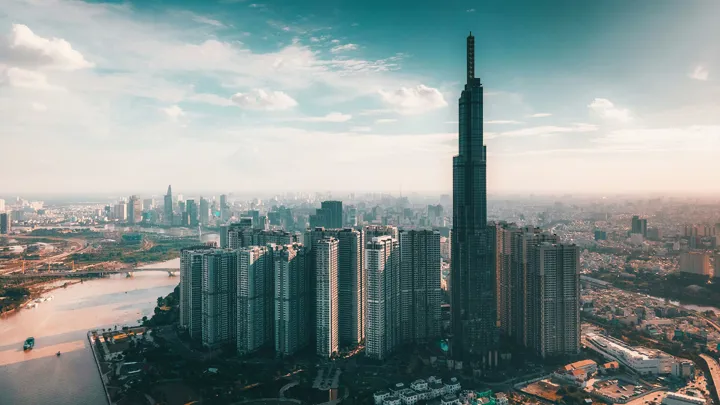
Send us your comments about : Map of Ho Chi Minh City: Your Essential Travel Guide to Vietnam’s Bustling Metropolis
Required fields *
You might also be interested
Travel ideas
Need some inspiration? Discover some of the best tours in Vietnam, which are highly appreciated by our clients. An excellent starting point to help you choose the right trip to Vietnam, Laos, Cambodia, Burma or Thailand, whether you are traveling alone, as a couple, as a family or with friends.
And because this trip is yours, feel free to customize it as you wish!
Vietnam Cambodia Itinerary 14 Days
Hanoi – Hoa Binh – Mai Chau – Ninh Binh – Halong bay – Hue - Danang – Hoian – Saigon – Ben Tre - Can Tho – Saigon - Siem Reap Angkor - Tonlé Sap - Siem Reap – Ta Prohm - Departure
Vietnam 14 Day Itinerary
Vietnam 14-day itinerary covers the country’s top highlights and quintessential experiences for an unforgettable journey.
Honeymoon Tour Pakcages In Vietnam 12 Days
Saigon Arrival - City Tour – Mekong Delta – Danang – Hoian - by flight - Da Nang – Hanoi - by flight – Halong - overnight on junk – Departure
Authentic Hoang Su Phi Trekking Tours
Hoang Su Phi trekking tours take you to stunning terraces, meet few tourists, connect with locals and enjoy authentic culture.
Best Nha Trang Beach Tour 4 Days
Saigon/Hanoi – Nha Trang relaxation – Saigon/Hanoi – Departure
Mekong Delta Bike Tour Itinerary 7 Days
Cycle through the Mekong Delta in 7 days, discovering floating markets, orchards, craft villages, and tranquil green islands.
Are you interested in this tour?




















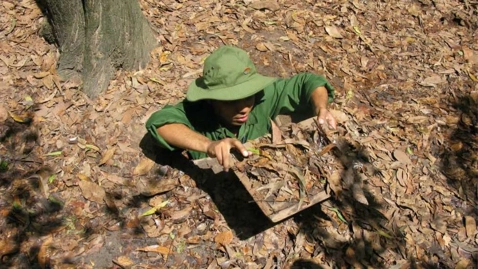



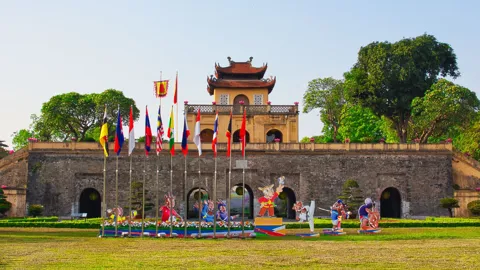













Comment